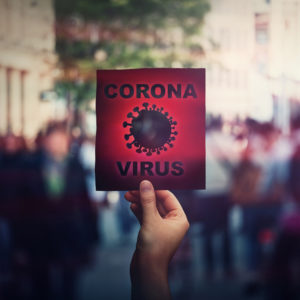For the past eight months, we’ve all lived in a sea of information — and misinformation — about the coronavirus as it has taken hold of our daily lives, our economy and our society as a whole.
As COVID-19 cases continue to surge, many lessons we have learned will keep us safer and, hopefully, less confused as we slog through what could be many more months of dealing with the pandemic.
For example, a recent Australian study found that the coronavirus can survive for 28 days on some surfaces. This is significantly longer than previously reported and is an important reminder that, in month eight of this pandemic, effective cleaning remains critical in curbing the spread of COVID-19.
As someone who oversees cleaning in corporations and manufacturing facilities across the country, and as a mom myself, I have seen what works when it comes to making the spaces we live and work in safe.
While nothing can guarantee protection from this rampant virus, there are things we can do to greatly increase our odds of staying safe and healthy:
More isn’t always better. Fear around COVID-19 has resulted in a lot of gadgets being put forward as the cure-all to keeping us safe like UV lights and cases. But, when it comes to cleaning, the mantra should be “less is more.” Sticking to the basics of using proven products with proper application, remains the most effective option.
In fact, some of the most effective products are probably already in your cleaning toolkit, such as dish soap, isopropyl alcohol, hydrogen peroxide and bleach. These are effective cleaners when combined with one of the most important ingredients — some good old-fashioned elbow grease — and are usually enough to keep our spaces clean and safe. Be sure to read labels carefully to avoid mixing chemicals that can be harmful once combined.
Improperly cleaning is even worse. While more isn’t always better, what is even worse is when cleaning isn’t done properly. Many of us are guilty of not reading the labels on cleaning products. If we did, we’d know that we often wipe away the disinfectant too quickly. Most household disinfectants need to be left on the surface for at least 10 minutes to be effective. It’s even better to not wipe or rinse them away at all; just let them dry.
Quaternary ammonium chloride compounds are the chemicals used in some of the most common at-home disinfectants like Pine-Sol, Clorox and Fantastik. If these cleaners are applied with a natural fiber cloth like cotton, a process called “quat binding” takes place. That’s when the active ingredient that kills germs sticks to cotton rags and not the surface you’re cleaning. You should use microfiber cloths instead.
Effective and regular communication is crucial. This year, we’ve received some contradictory messages about what we should be doing in the midst of COVID-19. It is human instinct to eventually tune out the information overload.
Here’s what I’ve learned from working with essential workers that parents can use at home: tell people what they need to hear to get through the day safely — and repeat it every day.
There are some very basic safety protocols that each and every one of us must practice: Wear a mask; wash your hands regularly and use hand sanitizer when you cannot; keep a safe distance from others. Most of us are already practicing these safety precautions, though the same could not have been said when we first faced COVID-19 back in March.
Confusion in the early days unfortunately allowed misinformation to take root. Now we know the necessary precautions and we must remain diligent.
Of course, that’s easier said than done, especially when we are busy, or when dealing with kids. The best way to combat this inconsistency is to show people, not just tell them.
For example, many companies I work with are making sure their cleaning services are front and center — cleaning schedules are prominently displayed, masked workers are wearing easily identifiable clothing and shifts are being moved so that more cleaning is happening during normal 9-to-5 hours rather than happening after the workplace is closed.
The same lessons can be applied at home by diligently and consistently continuing to do the things we know keep us all safe.
While we are all hopeful that COVID-19 cases will start to decline, we can take heart in knowing that we are better prepared all around for what lies ahead. We know what works best — and what doesn’t.
We know that we cannot let down our guard. And we know that we must effectively communicate the most important messages to those for who we are responsible.

